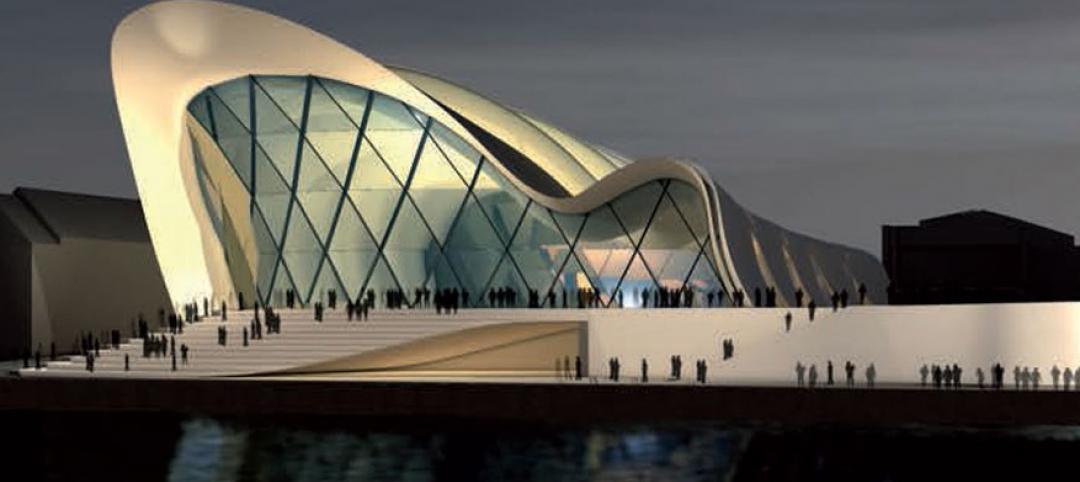The design nonprofit group Architecture for Humanity surprised everyone when it abruptly declared bankruptcy and closed shop in January 2015. Since that time, local chapters around the world have banded together in an effort to create a new identity and a new structure for the organization. In January 2016, they were briefly known as the Chapter Network before the newest rebranding effort was announced in early march.
The organization is now known as the Open Architecture Collaborative and is looking to retool its approach to “reach more people than we ever imagined with the level of locally focused engagement that humanitarian design ultimately demands,” Garrett Jacobs, the new Executive Director of the organization said in a statement.
As Curbed.com reports, the 30-chapter organization is based on ground-up governance and is looking to deliver “design advocacy, facilitation, assessment, and small build services to local grassroots chapters’ marginalized communities,” according to the group’s website. Additionally, OAC wants to help younger design professionals gain field experience.
While this rebranded organization is still in its infancy, it has many big ideas for the future.
“Cities are rapidly transforming and this organization provides local designers and experts to work with the communities that feel those pains the most,” Jacobs said in a video posted to the group’s YouTube channel.
A guiding principle for the OAC is that they believe if people design and build their own environments, they will be more likely to keep them safe, invest in them, and sustain them long term.
The organization will complete its board of directors shortly as the final few seats will be voted on and filled.
Related Stories
| Nov 14, 2014
Bjarke Ingels unveils master plan for Smithsonian's south mall campus
The centerpiece of the proposed plan is the revitalization of the iconic Smithsonian castle.
| Nov 14, 2014
Haskell acquires FreemanWhite, strengthens healthcare design-build business
The combination expands Haskell’s geographic presence by adding FreemanWhite’s offices in Chicago, Charlotte, Nashville, and San Diego. FreemanWhite will retain its name and brand.
| Nov 14, 2014
What college students want in their living spaces
In a recent workshop with 62 college students, architects from Little explored the changing habits and preferences of today's students, and how those changes affect their living spaces.
| Nov 14, 2014
JetBlue opens Gensler-designed International Concourse at JFK
The 175,000-sf extension includes the conversion of three existing gates to international swing gates, and the addition of three new international swing gates.
Sponsored | | Nov 12, 2014
Eye-popping façade highlights renovation, addition at Chaffin Junior High School
The new distinctive main entrance accentuates the public face of the school with an aluminum tube “baguette” system.
| Nov 12, 2014
Collaboration as competitive advantage
A collaborative planning and design process may seem like a common-sense goal, but the concept can be a challenge to achieve in the fragmented AEC industry. SPONSORED BLOG
Sponsored | | Nov 12, 2014
Williams Scotsman plugs into the jobsite
Many of our customers conduct important business from their temporary modular jobsite office and most require access to technology to get their job done effectively and efficiently. SPONSORED CONTENT
| Nov 12, 2014
Chesapeake Bay Foundation completes uber-green Brock Environmental Center, targets Living Building certification
More than a decade after opening its groundbreaking Philip Merrill Environmental Center, the group is back at it with a structure designed to be net-zero water, net-zero energy, and net-zero waste.
| Nov 12, 2014
Refocusing the shifted line
A recent trend in the practice of architecture that I’ve been noticing is the blurring of responsibility between design and construction coordination. I’m not sure why this trend began, but the subject is worth exploring, writes FXFOWLE's Mark Nusbaum.
| Nov 12, 2014
Designs by three finalists for new Beethoven concert hall unveiled
David Chipperfield and Valentiny are among the finalists for a new concert hall being built to commemorate Beethoven’s 250th birthday in his hometown of Bonn, Germany.

















